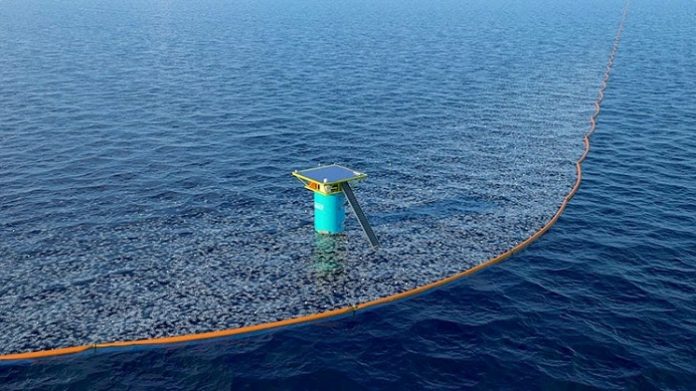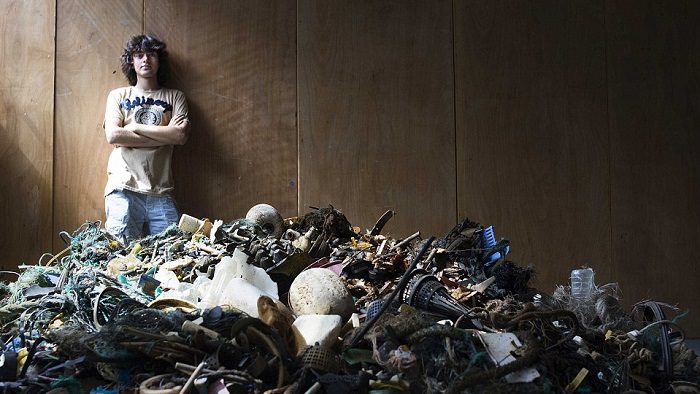The Vision
To initiate the largest cleanup in history of the world’s ocean plastics using advanced, environmentally friendly technologies.
Description:
Boyan Slat is a Dutch inventor, entrepreneur and founder of The Ocean Cleanup Project. The Ocean Cleanup is a foundation that has a Dutch tax-deductible status (ANBI) and operates fiscally through the Netherland America Foundation, Inc. The NAF is qualified as a 501(c)3 not-for-profit organization by the U.S. government.
The Ocean Cleanup has developed what seems to be the world’s first feasible method to rid the oceans of plastic. Every week the volume of two Empire State Buildings worth of plastic enters into the worlds oceans. This damages the eco-systems, economies and enters the food chain, thereby potentially becoming damaging to humans.
Instead of pursuing the plastic–which would take thousands of years and billions of dollars to complete–The Ocean Cleanup has developed a passive system that allows the ocean currents to concentrate the plastic itself. Research has now shown that we can clean up about half the Great Pacific Garbage Patch in ten years’ time.
The Technology
The technology behind the Ocean Cleanup project is designed to be as flexible as possible. This allows it to move along with ocean waves, which is key in ensuring the structure will be able to survive the most extreme conditions. Instead of using nets, The Ocean Cleanup uses solid screens which catches the floating plastic, but allows sea life to pass underneath the barrier with the current.
Diverting the Plastic
Because of the orientation of the barriers moored to the seabed, plastic will slowly be pushed towards the center of the array, becoming even more concentrated. This design provides a central collection point where the plastic is retrieved.
Extract, Store, Ship, & Recycle
Once the debris is concentrated at the central collection point, it’s extracted, buffered and then shipped to land for recycling. By recycling the debris and selling the semi-finished product directly to companies, the goal is to eventually make the the project self-sustainable.
Critics
Like any ambitious plan of this size and magnitude, there will be criticism (which can be found through online searches). It’s very easy to criticize and try to poke holes in another persons idea, however, critics can be very valuable in the development of any new concept, because they can point out deficiencies in the design that may otherwise go unnoticed until implementation.
Boyan Slat welcomes constructive criticism and he has responded to some of his critics in an open letter. Only time will tell how the model ultimately performs on a broader scale. The important thing is that young people are even thinking like this and putting forth solutions to large challenges. There have been many concepts that did not work right away only to become very successful after trial and error. Some ideas may need refining in the beginning, especially an idea of this scale with so many variables involved.
Here is how Boyan Slat concluded his response:
“To be fair, both activists and academics have seen many cleanup concepts come and go in the past decade and a half. With this in mind, a response like this one is very understandable. But while these (vessel based) concepts all ended at the fancy artist’s impressions, for us this was just the beginning.”
“When you are trying to do something that has never been done before, it’s only natural to have critics. We are actually very much open to serious critical review of the report. And until we have actually finished the operation, we will surely have no shortage of critics. But until that time, we can ensure we will continue, and keep a stiff upper lip.”
Funding
The Ocean Cleanup project relies on donations, sponsors and philanthropic support to advance its technology to the point it can be rolled out on the full scale. However, over the long term, The Ocean Cleanup aims to make the cleanup operation self-sustainable by monetizing the extracted plastic through recycling. They believe the recycled material can be priced at a premium, benefiting from the marketing value of Ocean Plastics. So far, their recycling research has shown that Ocean Plastic is a suitable feed-stock for a vast range of applications.
The Ocean Cleanup publishes their annual statements, balance sheets, and provides regular updates on their website. At the time of this writing, Charity Navigator rated the Netherland-America Foundation with an overall score of 84.
The Impact
The impact of cleaner oceans is wide reaching and in everyone’s best interest. With approximately 8 million tons of plastic entering our oceans each year, the program has the ability to affect issues ranging from the health and sustainability of our sea life, improving the economics of coastal tourism, and contributing to the overall health of our planet’s oceanic activity. By recycling the plastic collected in the ocean this project also has the ability to create its own unique industry creating jobs and saving resources.
Social Share
If you like what this organization is doing, please share this article using the social share bars below. These articles are written to create awareness about organizations creating positive changes in the world, but they are also meant to inspire others by showing real life examples of social entrepreneurs implementing bold visions for a better future. Remember, positive trends can be contagious.
For more information on The Ocean Cleanup project, or if you would like to help support the project, please visit their website.
Strong proponent of individual liberty and free speech. My goal is to present information that expands our awareness of crucial issues and exposes the manufactured illusion of freedom that we are sold in America. Question everything because nothing is what it seems.




















